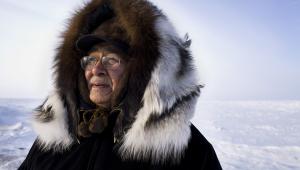Total promotion and marketing technique scenario have been changed now. That's why the value and demand of Social Media Customer Service is increasing day by day in the market.
Marketing Your Work: What Works In Today’s Photo World



To get a sense of what’s working—and what’s not working—for photographers today, I talked with a group of photographers about what’s working for them. Is direct mail still a viable technique? Do directory ads bring in work? How do portfolio websites and social media figure into business success today?
As you read the thoughts and opinions of the photographers and reps we interviewed, take note that they all work in different aspects of the trade and that has an influence on their response. What works in one market may not work in a different market.
Special thanks to our contributors:
• Dan Escobar—advertising photographer with a special style of photographing people, places, and things.
• Therese Gietler—producer/manager at andyBATTstudio.
• Evan Kafka—photography of people, babies, and animals for advertising and editorial clients.
• Norman Maslov, Agent Internationale—artist’s agent representing a small group of extremely creative commercial photographers.
• Wendy Pearce Nelson—consumer photo specialist in families and kids, events, and weddings.
• Angeline Pearson, AP Style Photography—fashion and glamour photography.
Shutterbug: What kind of success are you having with directory advertising? Do your clients still use them to find photographers?



Norman Maslov: When you think in terms of “directories” you now have to look at the entire package. The accessories and benefits must extend beyond the physical book and/or website. Do they have a useful website in addition to their physical book? Do they offer a printed promo piece or catalog? Do they have a database of agencies and clients? Do they have physical meet and greets? You need all the tools that direct traffic to your site and each directory has a different emphasis. None have it all so you must choose carefully.
Dan Escobar: I am only doing one campaign right now with AtEdge because I like the style and quality and my clients still use them to find photographers.
Wendy Pearce Nelson: Very little, if any. Most people are going to the web for basic phone book needs, so obviously the web is becoming the directory for all types of business needs and research.
Evan Kafka: It’s hard to quantify. I look at it as increasing brand awareness and recognition. There have been maybe two or three times I can say I got a job as a direct result of a particular exposure. It is okay if people know about you but they aren’t sure why. As long as they know who you are and what you can do, that’s all you can ask for. That’s why you have to continuously put yourself out there. A lot of times people mistake other people’s work for mine. That’s okay, too, as long as they associate a certain look with me, then it is working.
Angeline Pearson: I actually haven’t advertised in directories. I’d rather produce flyers as a promotional tool to my surrounding area. My clients were built from having already seen my work in a published college campus magazine, Belle Magazine. I also distributed these flyers while running photo booths for various events. I find that once you push your best work in front of potential clients’ faces, they immediately respond with interest.
Therese Gietler: We had been subscribers to expensive sourcebooks for many, many years, but once they started to promote more than just photographers and illustrators, I became concerned. They now promote all aspects of production, which I think makes it less likely that I’ll be found there. I am no longer a fan and no longer advertise. For $2000 a year, I saw no real return on investment. We do have our work on the Behance.net portfolio site, because it is free, and because it is the only way to have work posted directly on LinkedIn. I use it to showcase entire projects, like the entire Hewlett-Packard job, rather than having it act as a full site, similar to our website.
We have great Search Engine Optimization (SEO), so whatever search someone is doing on any portfolio site, they’ve probably done on Google as well, and they will have found us. If we didn’t have the great SEO (people photographer, sports photographer, etc.), I would think about these services more carefully.
Regarding print directories, we continue with AtEdge for several reasons: we like them; they limit how many photographers can participate; they only accept photographers with exceptional work vs. an exceptional ability to pay; they come out five times a year vs. just once; and their pages are templates so design is taken off the table. We are also with AtEdge because that’s where the big boys are.
SB: What do you think of the portfolio directory websites?

Evan Kafka: I don’t think they are really relevant unless you’re doing a very specific type of work or not working in a major market. How would anyone ever find me by searching for New York City portrait photographers? There are thousands. Also, there are so many of these directory sites and they are springing up constantly. They will come and go. They will be sold and bought and merged. Photographers are very insecure, and rightfully so. There are many businesses that capitalize on that. Google and a good website of your own is all you need.
SB: How does direct mail work for you?

Therese Gietler: I think direct mail is still very important. I’ve had several people compliment me on our tabloid piece, thanking me for sending it. But I personalize every single one, which is horribly time consuming. I’m sending out another 300 in the next few weeks, as I have the time to personalize them, with a handwritten note. It’s a physical reminder to folks that we exist in the real world, not just online. It’s a physical reminder that we’re the real deal, not a fly-by-night operation.
Dan Escobar: I think direct mail is one of the best ways to advertise and market your photography. I usually notice an upsurge in work after I send out a direct mail promo.
Wendy Pearce Nelson: We have tried this technique, and in some cases it has worked, especially if you pursue a very targeted market like high school seniors.
Evan Kafka: It’s all part of the same question. It’s impossible to really know if it works. If I can flash my name across an art director’s desk on the way to the trash, it’s worth it. If I can get on their wall, then it’s totally worth it. It is the same thing with e-mail promos. What else can we do?
Angeline Pearson: I have never used direct mail nor do I intend to. I personally dislike direct mail because it usually ends up with the rest of my designated junk mail. It’s similar to pop-up ads on the Internet. It’s a very intrusive advertising technique that my clients rarely respond to, in my opinion. There is now an iPhone application, PaperKarma, which helps stop junk e-mail from being sent to your address. All you need to do is take a picture of the junk mail with your phone. The web is too advanced to really partake in direct mail advertising for my market.
SB: What can you recommend about social media and how does it really market your work?

Wendy Pearce Nelson: We have been in business 25 years, so by definition we are “old school,” and some of the newer technology has been harder for us to embrace. However, this year we did make the leap into social media (Facebook, LinkedIn, BranchOut, YouTube), and I couldn’t be more delighted! We already have a following and our activity and “like” numbers are way up. This is all virtual, in a sense, but we can also feel the increased buzz in our calls, e-mails, and general “around town” reputation. I think these associations have helped create the community impression that we are still current and viable in today’s business world, which of course we are! I have employed a social media expert to help me with this process, which is money very well spent and actually much more reasonable than our past standard business advertising mediums (print, radio, TV, and billboard). So far, I feel very pleased with our results.
Evan Kafka: I got involved with Facebook finally about a year ago. I never look at it personally but I have a page for my photography and I publish my blog posts to it. I get a lot of hits from Facebook. Little clusters of people like my page. Recently I got five or six new likes around Sao Paulo. I think they are all students. One probably found me and liked my page. Their friends saw it and liked my page, etc. I’m not sure how valuable most of it is but if the right people like you then your page can be influential. It’s just another pipeline. You have to put the information on the forums where people want to receive it. I’m not doing any other social media yet but I’m sure I’ll get dragged onto others. For me the blog itself has been really fun. It’s a great outlet for me and a way to show people what I think is cool. If I can reach 400 to 500 people a month that is inspiring, even if I don’t know who they are. I can share my latest jobs that wouldn’t necessarily be appropriate or quite good enough for my portfolio. I can also share personal work or funny random pictures. I can show some behind the scenes, too. Now my blog gets more hits than my portfolio site.
Angeline Pearson: What I can recommend about social media is to always keep up-to-date with the latest tech advertising techniques. These days, nearly everything can be found on the Internet. Your brand as a photographer is everything because it is usually the first and last thing people remember. The more specific your brand is the better off you are. Your brand is not merely your name; it’s your mission statement, your image (self-image), your work (portfolio), and whatever else you associate with. Branding is essential in social media. It can either help you or hurt you, but that solely depends on the person. Social media markets my work by recognizing it through referrals, recommendations, and website advertisements.
SB: How do your best clients find you and what keeps those clients coming back for more?

Angeline Pearson: Right now my clients find me through my Facebook and cell phone. Some of my work is in a separate photo album entitled, “AP Style Photography.” Many of my friends look through my album and express their interest. Continuing to produce new work keeps clients coming back. It keeps my clients interested and even reminds them that these are the services I provide.
Dan Escobar: I do get a lot of return business by working hard and going the extra mile for my clients. I have a rep in New York, JKand.com, and John and Ed have done a great job for me.
Evan Kafka: The absolute best promotion is the actual jobs you shoot. It’s a bit of a “catch-22” but when people see your work published consistently they remember you. That’s why your blog is important, too, so clients can find that work with Google. If they see your pictures of rocks everywhere, they will think of you the next time they have a rock shoot.
Wendy Pearce Nelson: Our best clients generally come the good old-fashioned way, from personal referrals. We keep all of our clients coming back in a good old-fashioned way as well. We take great care of them, know them and their children by first name, welcome them warmly with hugs, coffee, tea, and treats, and try to bend over backward to help them in any way we can. Our full-time staff is trained extensively in excellent customer service. And, of course, we produce a superior photographic product and experience.
Website Resources
• Dan Escobar
www.danescobar.com
www.jkand.com
• Therese Gietler
www.andybatt.com
www.facebook.com/andybattstudio
• Evan Kafka
evankafka.com
sensorsensibility.com
• Norman Maslov
www.maslov.com
http://manhattman.com
• Wendy Pearce Nelson
www.bluefoxphotography.com
• Angeline Pearson
www.apstylephotography.tumblr.com
- Log in or register to post comments


I am very happy to read this. This is the kind of manual that needs to be given and not the random misinformation t hat's at the other blogs. Appreciate your sharing this best posting.

It would be truly savvy to figure out how to rank one in google on the off chance that you need to profit online in the meantime change over your site guest into a paying customer. you can begin with learning copywriting and search engine optimization via http://www.writingbunch.co.uk/ . Copywriting is getting individuals your page and web optimization is in charge of offering them
















































